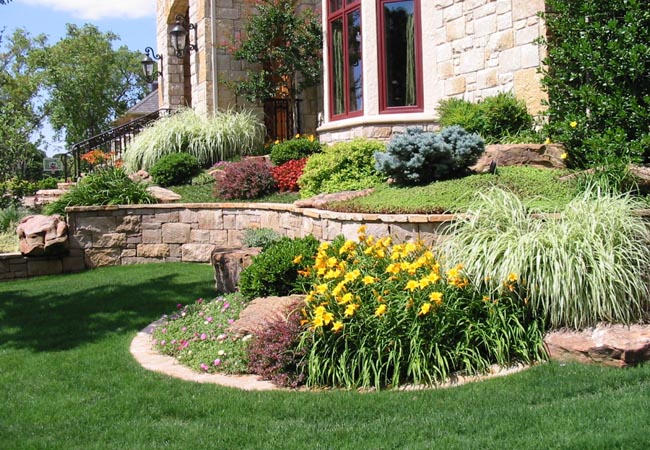When it comes to creating a stunning and useful outdoor space, homeowners often find themselves traversing the detailed world of garden design. At the heart of this process lies two essential elements: hardscape design and softscape design. Hardscaping refers to the non-plant elements in your landscape, like patios, walkways, and stone walls, whereas softscape encompasses the flora aspects, like plants, flowers, and trees. Striking the right harmony between these both elements can transform your yard into a beautiful oasis that demonstrates your personal style while serving your lifestyle needs.
Understanding the unique benefits of both hardscaping and softscaping is important for maximizing the potential of your outdoor space. Landscaping professionals can provide valuable insights and help avoid typical mistakes that DIY enthusiasts often encounter. From boosting property value to boosting aesthetic appeal, the proper approach to landscaping can offer lasting rewards. As we delve into the skill of balancing hardscaping and softscaping, we will discuss useful tips and advice that will allow you to cultivate a yard you can be proud of, all while considering green methods that benefit the planet.
The Value of Expert Landscaping
Choosing expert landscaping may greatly enhance the charm and functionality of your land. A well-designed landscape not only elevates the aesthetic of your residence or commercial space but also contributes to your entire quality of life. Professional landscapers have the expertise to create stunning designs that feature hardscaping elements like patios, walkways, and outdoor kitchens, seamlessly blending them with softscape features such as gardens and lawns. This blend is essential to creating inviting outdoor spaces that are simultaneously beautiful and practical.

One of the primary pros of engaging a landscaping service is the specialized expertise they provide. Professionals understand the specific needs of your property, including soil composition, climate conditions, and the most suitable plant selections for your environment. They can also identify common landscaping blunders that residents often make, helping you avoid expensive errors that could reduce your landscape's worth. By leveraging their expertise, you can ensure a cohesive design that boosts your land's appeal.
In addition, professional landscaping is a prudent investment when it comes to boosting the value of your home. Research indicates that properly cared for landscapes can add considerable worth to homes and commercial properties. In many cases, a beautifully landscaped property can see a return on investment of up to 15% or higher. This boost not only renders your land more attractive to prospective buyers but also distinguishes it in a competitive market. By making the commitment to select professional landscaping, you are prepared to reap long-term rewards, both in enjoyment and profit.
Essential Yard Maintenance Techniques
To preserve a vibrant lawn, regular mowing is important. Keeping your grass at the appropriate height promotes healthy growth and thickens the turf. Mowing your lawn when it’s dry allows for smooth cuts and reduces stress on the plants. Aim to mow at a higher setting during the warmer months to encourage stronger root growth and cover the soil, which helps retain moisture and suppress weeds.
Watering is another key element in lawn care. Established lawns generally require about one inch of water per week, including rainfall, to stay healthy. It is ideal to water early in the morning or late in the evening to reduce evaporation. Using a sprinkler system with a schedule can ensure your lawn receives consistent moisture without too much water, which can lead to issues like fungus and poor root systems.
Nutrient application is essential for providing your lawn with the nutrients it requires to thrive. https://groundsmaintenance-yorkshire.co.uk/ balanced fertilizer applied at the appropriate times of the year can enhance growth and color. Early spring and fall are optimal for applying fertilizer, as the grass vigorously grows during these periods. Make sure to follow the manufacturer’s guidelines to avoid over-fertilizing, which can negatively impact the environment and your lawn’s health.
Eco-Friendly Garden Options
Integrating sustainable landscaping practices is vital for creating sustainable outdoor areas that flourish while reducing ecological impact. Using indigenous plants is a key strategy, as these species are well adapted to local climates and demand less water and upkeep. By choosing native vegetation, homeowners can lessen their reliance on chemical nutrients and pesticides, fostering a more robust ecosystem that nurtures local fauna, particularly pollinators.
A further successful method is adopting xeriscaping, that focuses on designing a landscape that needs minimal watering. By choosing drought-resistant plants and installing efficient irrigation systems, homeowners can save water while preserving a stylish and vibrant yard. Covering flower beds and gardens also improves water retention in the soil, cutting down the need for regular watering and improving the overall health of the garden area.
In conclusion, including hardscaping elements like permeable patios and walkways contributes to sustainable landscaping by promoting proper drainage and reducing runoff. These features not only improve the aesthetic appeal of the outdoor space but also mitigate erosion and water accumulation problems. By implementing these sustainable landscaping methods, homeowners can achieve a harmony between beauty and environmental stewardship, leading to improved properties and neighborhoods.
